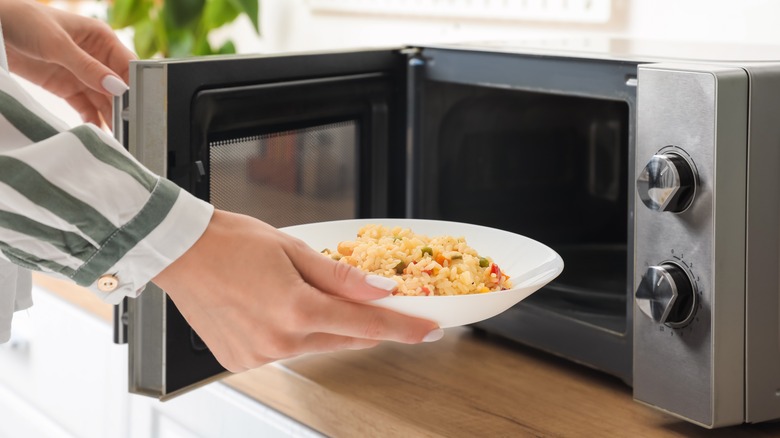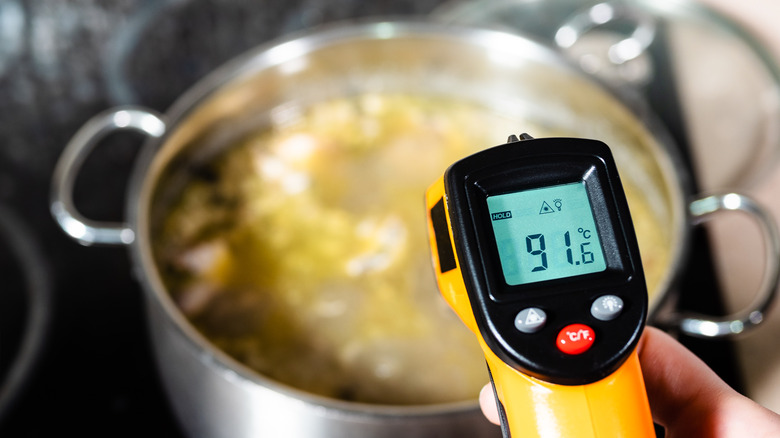What Exactly Is The 'Danger Zone' For Reheating Food?
Images of Tom Cruise on a motorcycle racing a fighter jet may first come to mind when we hear "danger zone," but the term also refers to a temperature range we should aim to keep our food out of to ensure it remains safe for consumption.
Bacteria growing on our food isn't just gross to think about — it can be downright life threatening. E. coli, salmonella, and listeria are commonly found on food items and frequent the headlines in recall announcements, per the University of Alabama at Birmingham. While our stomachs come armed with acid and are a solid line of defense against pathogens, the best weapon is temperature.
Turns out the highway to the danger zone is an important one to be aware of when it comes to reheating leftovers and food safety. What exactly is the "danger zone," and how can you avoid it when heating up yesterday's takeout or that homemade pot of chili?
How to stay out of the 'danger zone'
The danger zone lies between 40 and 140 degrees Fahrenheit, per the USDA. This means that in order to halt the growth of bacteria, food needs to be kept colder than 40 degrees or hotter than 140 degrees. This is precisely why refrigerators are typically set at 40 degrees — and something to keep in mind next time you're digging into that sunning potato salad at an outdoor summer barbecue. Bacteria is capable of doubling in just 20 minutes once it enters the danger zone. Bottom line? Keep cold food cold and hot food hot.
To avoid hanging out in this zone when you want to take your leftovers from fridge to plate, there are a few easy rules to follow, per the USDA. First, cool leftovers as quickly as possible to avoid the zone. Move the food into the refrigerator swiftly, being sure to split large batches into smaller containers so they cool faster (such as that pot of chili). When you're ready to reheat the leftovers, the best way to ensure safety is to grab a thermometer and aim for 165 degrees. If using a microwave, check for cold spots to ensure the food is heated through thoroughly. If reheating sauces, soups, or that chili on the stovetop, bring it to a rolling boil.
The safest way to bring frozen leftovers back to life is to thaw them in the refrigerator so they absolutely never go above 40 degrees. It takes a bit longer, but best to leave the danger zone exploring to Maverick.

